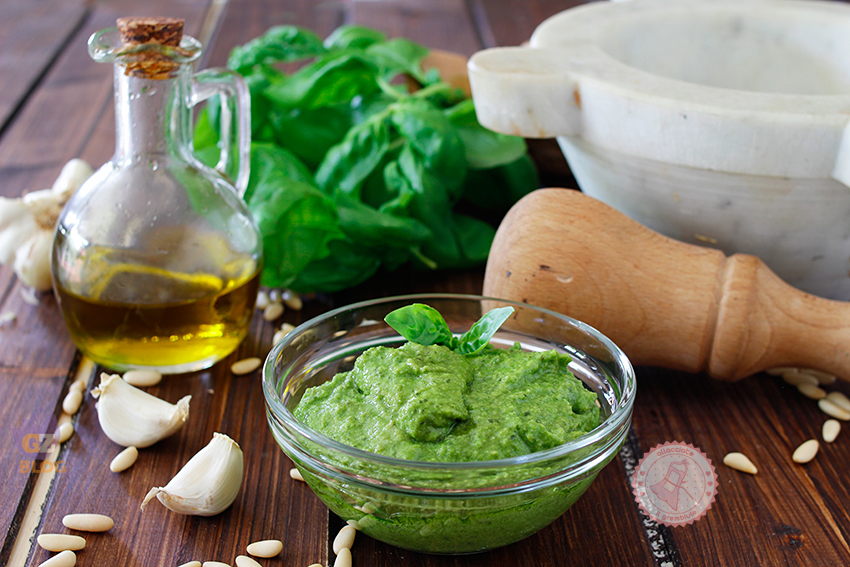



Basil is the regal plant per excellence. As a matter of fact, its very name comes from the Greek “basilikòs”, meaning exactly that: “regal”. It is useful to know its scientific name, Ocimum basilicum, the first term meaning “scented”. Therefore, basil is a scent, and, above all, it is the scent of Liguria. One finds it in kitchen-gardens in summer, next to tomatoes, because its pungent odour is believed to keep unwanted insects away.
The prevalent image, though, is that of a pot on the windowsill of one of those tall windows in historical Ligurian towns. Often the pot should be a discarded saucepan. Thus, the branches hang down adding a gentle touch to any image. Basil is believed to have many properties, both protective and aphrodisiac, or at least conducive to friendship and goodwill.
Basil is, after all, the protagonist of Ligurian cooking. In “pesto” basil goes with garlic, Sardinian “pecorino” cheese (a salty, hard cheese made from the milk of goats – Translator’s note), extra-virgin olive oil and pinenuts. To prepare basil according to tradition it should be made or rather “crushed” in a classic white marble pestle. This sauce should not be as creamy as publicity presents it to us nowadays, but rather rough. The crushed ingredients must be clearly distinguishable. Yet pesto is not a particularly ancient preparation. In fact, it substitutes the white garlic sauces of the Middle Ages like the “camellina” or “ginestrina” sauces. The creation of pesto is, after all, a success story of the 1700s. As one of its main ingredients is in fact extra-vergin olive oil. The XVIII century was in fact the time of greatest expansion for olive tree plantations, some along the coasts but mostly inland. In the 1800s specific quotations can be found in Genoese recipe books: “trenette” or “trofie” with pesto became known as the flavours of Liguria.
Ingredients:
4 bunches of basil, 40 grs. Parmesan cheese, 20 grs. Sardinian “pecorino”, a handful of pinenuts, two cloves of garlic, coarse seasalt.
Wash and dry basil leaves taking care not to crush them. Put garlic and a few grains of salt into a pestle and crush them; add the basil leaves after patting them dry, pinenuts (some people use walnuts) and the two cheeses (Once upon a time, purely for reasons of economy, “pecorino” was substituted with cheese from Brà) keep crushing the lot until it becomes a smooth mixture.
Let’s remember that basil’s essential oils are kept in small veinlets in the leaves, and, to achieve the best flavour, they must not be heavily crushed, instead the pestle must be rotated lightly thus tearing the scented leaves apart rather than chopping them.
It must be prepared at room temperature and within the shortest possible time to avoid problems of oxidization.
“Trofie, trofiette, trenette avvantaggiae, mandilli de saea”, all real musts of our cooking, can be served with pesto and “menestron” (minestrone) can be made perfect by it.
Those wishing to use the faster but sacrilegious blender, should take care to use it at the lower speed and turn it off at intervals, to avoid overheating the blade thus ‘cooking’ the basil.
Pesto is a raw condiment which only allows heat once when coming into contact with the cooking water from the pasta just before serving.
Pesto can be kept in clear glass containers, covered with a layer of oil.
